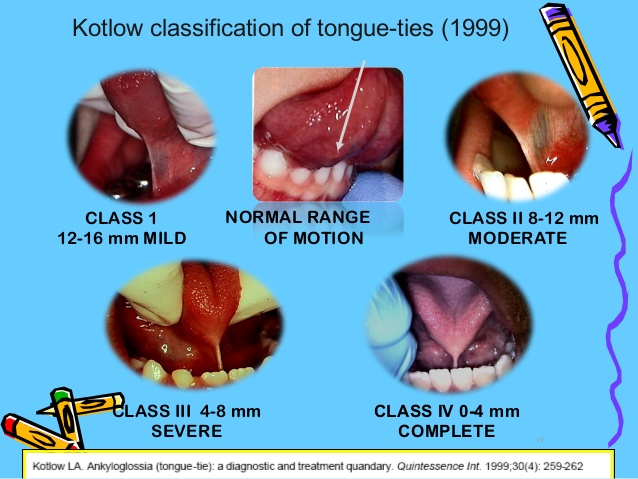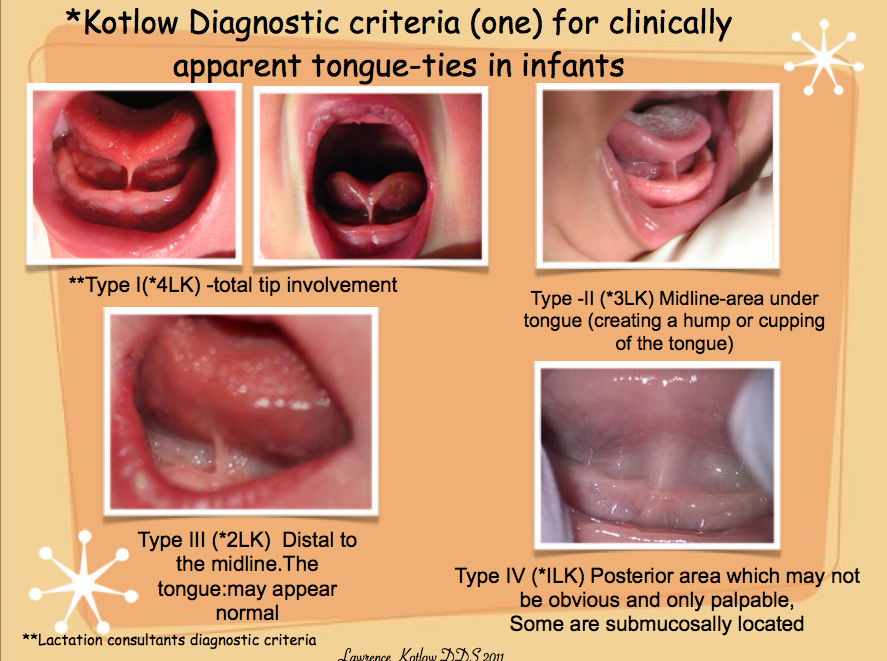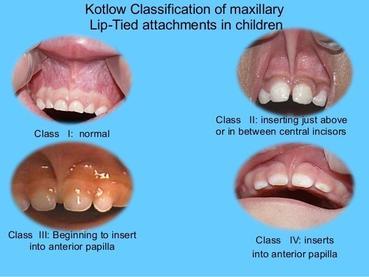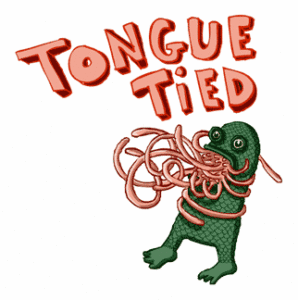The Tongue- & Lip-tie Guide
Part 1: Potential Adverse Effects on Your Child’s Speech Development (and other areas)
When I initially began my research for this upcoming newsletter back in December, it was merely for educational and professional purposes. Three mothers reached out expressing concerns over their child’s diagnosis of a tongue-tie. “Is it going to affect his/her speech?”, each mom asked. Following with, “Do you think I should have the surgery?” or “Should it be clipped?”. I felt pressure to give my opinion, and ultimately guide these parents in the decision to have their child undergo a surgical procedure. So, I reached out to the Tongue- and Lip-tie guru of the tri-state area, Oral & Maxillofacial Surgeon, Dr. Scott Siegel. He graciously invited me in for a day of shadowing and answered a laundry list of my questions on the topic. But then, in the midst of my research, just few days shy of my highly anticipated day of shadowing, my 13-month old son fell and earned a bloody gash/bruise on the inside of his lip. As I lifted my little guy’s upper lip to examine his wound, I found none other than a very prominent lip-tie staring back at me. How had I not noticed? How did this all happen at the same time? Coincidence. This topic instantly became personal, as well as a two-part series.
TABLE OF CONTENTS
- Terms Defined
- Tongue- & Lip-tie Classifications/Types
- TOTs & Speech Production (Research, Professional & Personal Experiences)
- TOTs & Feeding (Research)
- Overview of Surgical Procedures
- Summary & Recommendations
The Tongue- & Lip-tie Guide, Part 2: The Surgical Procedure, set to be released in March 2019, will walk you through the surgical experience. Outline assessment and evaluation procedures, what to expect, surgical procedures, weigh pros vs cons, and discuss post-surgery outcomes and expectations.
TERMS DEFINED
A lingual (tongue) frenulum is tissue connecting the tongue to the floor of the mouth. It helps stabilize the tongue for sucking, swallowing, eating and speaking. Ankyloglossia, or tongue-tie, is a shortened lingual frenulum that fuses the tongue to the bottom of the mouth. The fusion can be partial or complete; affecting the tongue’s mobility and ability to rest on the top of the mouth for appropriate palate growth.
A labial (lip) frenulum is tissue connecting the upper lip to the upper gum. A lip-tie is a shortened labial frenulum that limits lip mobility.
A frenectomy is the surgical removal of a frenulum. As referred to as tongue-tie/lip-tie release, or tongue-tie/lip-tie surgery.
Tethered Oral Tissues (TOTs) is collective term for tongue-ties, lip-ties, and buccal-ties (cheek).
STATS
Dr. Scott Siegel reports that 20-37% of the population are born with some form a TOT. Within his 19 years of practice, he’s found tongue-ties and lip-ties co-occur in 90-100% patients.
Lift your tongue and lip up in the mirror to check out your lingual and labial frenulum!
POTENTIAL ADVERSE EFFECTS OF TOTs
- Discomfort/Pain
- Feeding: breastfeeding, swallowing, reflux
- Dentition (teeth) & Palate: narrow palate (tongue-tie), tooth decay (lip-tie), gap in between front teeth (lip-tie)
- Speech Production (tongue-tie)
- Mechanical/Social Difficulties: licking an ice cream cone, kissing, cleaning mouth
CLASSIFICATION OF TONGUE-TIES & LIP-TIES
Dr. Lawrence Kotlow developed classification systems that outline the range of severity (Image A) and types (Image B) of tongue-ties. As well as a classification system for lip-ties (Image C).



TOTs & SPEECH PRODUCTION
Unfortunately, the very little research on this topic fails to confirm a relationship between tongue-ties and speech production. The most informative literature comes from Pediatric ENT-Otolaryngologists, Dr. Anna H. Messner & Dr. M. Lauren Lalakea. They found 60% of ENTs, 50% of SLPs, and 23% of pediatricians believed that Ankyloglossia is likely to cause speech problems (2000). In 2002, they followed children with diagnoses of a tongue-tie, pre- and post-frenectomy. The results yielded improvements in tongue protrusion, tongue elevation, and articulation skills, in more than half of the children (Image D). So, while the studies fail to establish a clear relationship between tongue-ties and speech production difficulties, there is professional opinion and research that suggests one.
In 2016, I worked at the Gramercy School (a Manhattan Special-needs Preschool) and shared a therapy room with Speech-Language Pathologist, Brenda Stone. That winter, Ms. Stone began treating a 3-year-old boy with both articulation and language difficulties. I recall significant articulation delays; he was unable to elevate his tongue for /l, /t/ and /d/, and was unable to produce multi-syllable words. According to Ms. Stone, the limitations due to his tongue-tie were more extensive than I recall. She described his speech as poor and unintelligible. She reported feeding difficulties, significant drooling, and limited range of motion of his tongue. Post-lingual frenectomy, both I, and Ms. Stone recall an immediate difference in regard to his tongue movement. She reported that after approximately 6 months post- surgery, his articulation skills were within the low average range with improved speech intelligibility (amount of his speech that is understood). He continued to receive speech-language services for both articulation and language skills for the next year and half following surgery.
Now I’ll play devil’s advocate. I recently found out that two adult friends have Type II & III tongue-ties. Both of these adult friends are 31 years old, with no history of speech production or feeding difficulties. One of these friends I’ve known since birth; we were neighbors and grew up together. I wouldn’t have known she had a tongue-tie if she didn’t tell me! Both of these adults do not feel their tongue-ties impact them negatively in any way, other than not being able to stick their tongues out very far.
If you were disappointed by the lack of research on tongue-ties and speech development, well, I have bad and good news for you. Bad news first: there is even less on lip-ties and speech development. Good news: there is a lack of research because lip-ties do not typically incur speech production difficulties later on in life. Dr. Ghaheri says, “Generally, I say no. In some severe cases, if the lip tie is causing the child some discomfort with mouth opening (because of tension), they may alter their oral anatomy to minimize pain, which could impact speech”.
Now, I have a Class 2 lip-tie (Refer to Image C). No way? Yes, way. I have no speech production difficulties caused my lip-tie. But to be honest, it has always bothered me. My brother and son have Class 3 lip-ties (Refer to Image C). Neither of us have experienced any speech related issues due to our lip-ties.

TOTs & FEEDING/DENTITION/DISCOMFORT
There is much research confirming the relationship between TOTs and feeding. In 2016, a study conducted by Dr. Siegel confirmed a relationship between TOTs and reflux in breastfed infants, likely due to insufficient latch (Image E). Similarly, Dr. Bobak Ghaheri’s study of mothers breastfeeding their infant, each with a diagnosis of tongue-tie and/or lip-tie found an increase in breastmilk intake, reduction in reflex, and a reduction in nipple/nursing plan, following their infant’s release of the TOT (2017). Lip-ties have also been found to cause significant tooth decay in breastfed infants, due to the infant’s inability to remove residual milk (Kotlow 2010).
Now back to my family’s experience with lip-ties and our dentition. I have had two rounds of braces, and in the end, my dentist inserted a permanent retainer behind my top 6 teeth to prevent separation again. My brother’s experience was the same, however at the age of 11 he underwent a labial frenectomy while under the care of our childhood orthodontist and dentist. He recalls both professionals explaining that even with braces, his two top teeth would not have stayed together otherwise.
My lip tie is also uncomfortable at times, always feeling tight. When wearing a removable retainer in the past, it would cause pain as it leaned against my lip-tie. As an adult, it is sensitive when something hits or brushes against it (ex: electric toothbrush). Now let’s be real, these aren’t life-threating issues, but were on the topic so I figured I’d share my experience with you.

SURGICIAL PROCEDURES
March 2019’s Newsletter will discuss TOTs surgical options in depth. Until then, here is a brief overview of your surgical options. You should consult with your doctor to discuss the pros vs. cons of their method of choice. Of these three procedures, it seems that physicians specializing specifically in the removal of TOTs use lasers. See website resources to refer to each of their sites.
| Laser | Electrocautery | Scalpel | |
| Operation Time | <10 min | <10 min | 10-30 min (depends on whether anesthesia is given) |
| Bleeding | Virtually bloodless | Virtually bloodless | Significant Bleeding |
| Suturing | No | No | Yes |
| Pain (post-op) | Mild-moderate | None-mild | Moderate-Severe |
| Pain Duration (post-op) | Children: 0-2 days of discomfort Adults: 1-2 weeks | Children: 0-2 days of discomfort Adults: 1-2 weeks | Children: 0-7 days Adults: 1-3 weeks |
| Scarring | Virtually none | Minimal | In more than half of cases |
BOTTOM LINE
TOTs are linked to poor breastfeeding abilities (e.g. insufficient latch, nipple/nursing pain, reflux, breast milk intake). There are other potential adverse effects, such as speech production difficulties, tooth decay, orthodontic issues, pain/discomfort, sleep apnea, and mechanical/social difficulties. In terms of speech development, tongue-ties may cause limited mobility of the tongue, resulting in difficulties producing with /t/, /d/, /n/, /l/, /th/, /s/, /z/, /ch/. It is important to know that adverse effects from TOTs vary from case to case; patients can have difficulty in one area, have multiple co-existing, or have no difficulties at all.
My son is 13 months old; he breastfed well and continues to eat solid foods well. While he currently has no functional issues associated with his lip-tie, I’m concerned orthodontic problems will come into play when his adult teeth begin to grow in. After a month of research on this topic, observing multiple frenectomies, and having lip-tie difficulties myself, I’ve decided to move forward on my son’s labial frenectomy. Dr. Scott Siegel of NYC will be using the laser technique while performing his surgery in the next few weeks. It is important to make an educated and individual decision the management of TOTs by reading the literature, consulting with your doctor, and collaborating with other professionals.
From your fellow first time Mom and Pediatric SLP, I hope this helps. Always feel free to reach out.
Rachel Kirson M. S. CCC-SLP, TSSLD

REFERENCES
Ghaheri BA, Cole M, Fausel SC, Chuop M, Mace JC. Breastfeeding improvement following tongue-tie and lip-tie release: A prospective cohort study. Laryngoscope. 2017; 127(5): 1217-1223.
Kotlow L. Ankyloglossia (tongue-tie a diagnostic and treatment quandary); Quintessence International 1999;30 (4): 259-262
Kotlow L. The influence of the maxillary frenum on the development and pattern of dental caries on anterior teeth in breastfeeding infants: Prevention, Diagnosis, and Treatment. J Hum Lact. 2010.
Messner AH, Lalakea ML. Ankyloglossia: controversies in management. Int J Pediatr Otorhinolaryngol. 2000 Aug31; 54(2-3): 123-31
Messner AH, Lalakea ML.The effect of ankyloglossia on speech in children. Otolaryngol Head Neck Surg. 2002; 127(6): 539-545.
Reddy, N. R., Marudhappan, Y., Devi, R., & Narang, S. Clipping the (tongue) tie. Journal of Indian Society of Periodontology. 2014. 18(3), 395-8.
Siegel S. Aerophagia induced reflux in breastfeeding infants with ankyloglossia and shortened maxillary labial frenula (tongue and lip tie). Int J Clin Pediatr. 2016; 5(1): 6-8.
WEBSITE REFERENCES
www.kiddsteeth.com (Dr. Lawrence A. Kotlow – Pediatric Dentist)
www.drghaheri.com(Dr. Bobak Ghaheri – Otolarynglogist/ENT)
www.drscottsiegel.com(Dr. Scott Siegel – Oral & Maxillofacial Surgeon)

